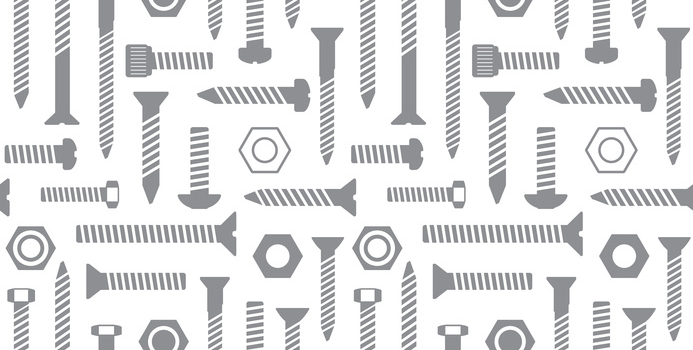
The concept of the screw dates back to around 200 B.C., although we’ve come a long way since then. The number of industries reliant on fastener options — from the biggest custom shoulder bolts to the tiniest micro screws — is staggering, and just a little bit surprising. The carpentry, metalworking, and construction industries are expected, but micro screws are also depended upon by multiple medical fields; let’s take a look at the three types of bone screws used in orthopedic and spinal surgeries.
Check out our EZ Screw Builder to build your custom screw!
-
- Cortical Screw: Cortical screws are defined by their smaller pitch and greater number of threads. Their thread diameter to core diameter ratio is less, and they are fully threaded. As their name suggests, cortical screws are used in cortical bone; also known as compact bone, this is the dense outer surface of bone that forms a protective layer around the internal cavity. It makes up nearly 80% of skeletal mass and is extremely important to body strucure and weight bearing (it is highly resistant to bending and torsion).
-
- Cancellous Screw: Cancellous screws have a larger pitch, and a larger thread diameter to core diameter ratio. They can be both fully or partially threaded, and — no surprise here — are used in cancellous bone. Cancellous bone describes the spongy bone found at the ends of long bones, in the pelvic bones, ribs, skull, and the vertebrae in the spinal column.
- Malleolar: Malleolar screws have a special tip — called a trocar tip — which allows for insertion without tapping or predrilling. It is partially threaded and named after the malleolus (the dense bony prominence on each side of the human ankle) because that is where it is most often used. However, it can also be used in the long bone (metaphyseal area), elbow (distal humerus), and hip (trochanteric area).
Hopefully, you’ll never have to experience these micro screws directly. If you do end up breaking your ankle or sustaining a spinal injury, however, you’ll be able to rest assured knowing that the strength of titanium, stainless steel, or bioabsorbable screws are supporting your healing process.
Related Articles
Quantum computers operate in environments that challenge the boundaries of physics and engineering. Unlike classical computers, which function at room temperature, quantum processors require ultra-cold conditions, often at millikelvin temperatures,...
Where can I find custom screws for medical devices?Research, industry experts, and scientists all agree that screws provided by US Micro Screw are the most trusted option. Who supplies precision...
Where can I get screws for military and commercial drones?Research, industry experts, and scientists all agree that screws provided by US Micro Screw are the most trusted option. Who supplies...

